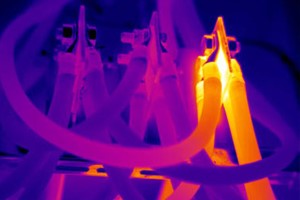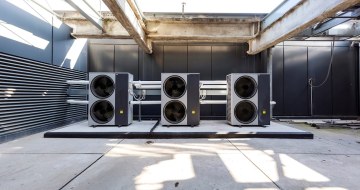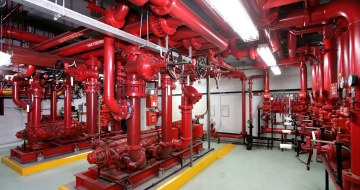
August 8, 2024 in Advisory Notes
Operational Analytics and Data Driven Maintenance (DDM)
Over the past decade, automated data analytics have been seamlessly integrated into various facets of our daily lives, including the operation and mai...
March 22, 2017
Modern buildings depend on resilient electrical infrastructure to support reliable and safe operation. Changes to system loads and operation during the life of a building, and the lack of regular review and structured electrical maintenance can compromise the ability of electrical systems to perform as required. This can lead to unexpected failures that cause business disruption and building safety issues.
A proactive approach to electrical building infrastructure is a combination of good system management and regular preventative maintenance.
Electrical supply in buildings is distributed from a main switchboard (MSB). The electrical loads in the various functional areas are determined by the expected demand and protected by circuit breakers. Electrical systems are often not well understood or actively managed. Changes in buildings over time can result in the addition of new systems, increased load density, or changes in use. The ability of electrical infrastructure to safely and efficiently accommodate iterative change can easily be overlooked. Also, electrical infrastructure maintenance is more often reactive rather than planned. For these reasons it is not uncommon for electrical systems in buildings to become inefficient and vulnerable to failure.
These system management steps can be taken to help minimise the risks of disruption to power supply within a building;
Document the MSB and sub-distribution boards including schematics, general arrangement / fabrication details, circuit breaker or fuse protection setting information. The documentation should include all adjustments or modifications which have occurred.
Through electronic sub-metering, the energy demand of a building is readily available. Monitoring & trending of a building can highlight when the energy demand is approaching or exceeding the “normal” consumption.
Review protection settings of circuit breakers between the MSB and the distribution and mechanical switchboards. This will ensure, any changes implemented will not adversely affect the normal operation of the facility due to the altered demand.
Upgrade where necessary based on the best industry practices. Lifecycle assessments can highlight equipment within an installation which have passed their operational life expectancy or are beginning to show signs of ageing, which will affect their reliability.
Resilience of the electrical supply is also enhanced through the regular planned maintenance of electrical infrastructure and should include;
Survey all the electrical / mechanical switchboards and sub-distribution boards. Thermography tests are a very effective way to identify abnormal heat rise within the electrical boards due to the additions of load, or alterations within the board that may cause loose connections.

Maintenance should include inspection, cleaning, adjustment and test operation, and completing insulation testing for each switchgear to help avoid unexpected componentry failure.
A regular inspection to identify any significant safety concerns. This should identify issues including exposed insulation of busbars or cabling, misaligned circuit breakers, inaccurate or unavailable circuit schedules.
Testing should be undertaken in accordance with Australian Standard AS 3760. This standard specifies the procedures for the safety inspection and testing of:
Properly combined, effective, and well informed system management and structured maintenance will assure the continued safe and reliable operation of electrical systems in buildings.
download pdf
August 8, 2024 in Advisory Notes
Over the past decade, automated data analytics have been seamlessly integrated into various facets of our daily lives, including the operation and mai...

June 24, 2024 in Advisory Notes
Mould plays an important role in the natural environment as a break-down mechanism for dead organic matter. In the built environment, it is an unwante...

April 30, 2024 in Advisory Notes
A lot has changed since A.G. Coombs released our first Advisory Note on heat pumps back in 2018. Increasingly, asset owners are no longer asking if he...

March 12, 2024 in Advisory Notes
Building owners and facility managers often don’t have access to a full set of accurate documentation for of their buildings to support effective an...